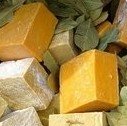Calculating Carbon : Nitrogen Ratios for Composting
by jackie unstad
(omaha ne )
What would be the balance just using horse manure and grass clippings?
**********************************************************
Jackie, you ask about working out the calculations of carbon to nitrogen ratios using horse manure and grass clippings.
I first need to say that horse manure is very high in carbon and therefore any compost heap using horse manure should be placed well away from streams, rivers and water supplies. At least 10 - 15 feet away. Compost is also a combustible material so don't place your heap near haystacks and barns.
Getting that out of the way, now to your question, which isn't easy to answer without getting very technical and using a lot of calculations.
However, it can be done, and by the time you are finished with the calculations you will be able to put together any combinations of materials for your compost heap so that it breaks down successfully. That is, as long as you know what the nitrogen and carbon figures are for the type of material you want to add to the compost heap.
By now, after reading the article you will know that the optimal ratio between carbon material and nitrogen material for getting out good compost is 25:1 - 30:1. Anything below that will take a long time to break down.
Now, if you are using only horse manure, already you have a good start as the carbon:nitrogen ratio for plain horse manure is on average 25:1. However, this figure is very different if you have a combination of horse manure and straw bedding. Now your ratio will be closer to 50:1. And if the bedding is saw dust you could be looking at 500:1!
In addition, grass clippings also differ in whether what you are adding is either dry or green. If you are adding dry grass then the carbon content will be a lot higher, as opposed to just green grass clippings.
Finally, when looking at grass and horse manure, both have a nitrogen component. For plain horse manure this is around 1.6% and for grass clippings it can vary from 2.4 - 3.4%. In addition, green grass clippings have a carbon component of about 12 - 14.
Calculating carbon nitrogen Ratios
If you want to know how much material to put together to get the optimal 25:1 ratio, and you want to get scientific about it, then you will have to know and work out the following:
1) The nitrogen component for both horse manure and grass clippings
2) The carbon component for both horse manure and grass clippings
3) Knowing these you need to add the totals together of each and then divide the two totals to get the carbon:nitrogen levels.
So, for example, if we take 20 buckets of horse manure, and we know that the content for carbon is 25, then 25 x 20 = 500
If we take a 1/2 bucket of grass clippings with a carbon content of 14 , then 1/2 of 14 = 7.
So what is our total carbon figure? 500 + 7 = 507.
Now we do the same for the nitrogen component.
For horse manure: 1.6 x 10 = 16
For grass clippings: 3.4 x .5 = 1.7
16 + 1.7 = 17.7 which gives us the total nitrogen figure.
Now we need to divide the total carbon figure by the total nitrogen figure to get the ratio we hope will be between 25-30.
So, 507 / 17.7 = 28.6
Although this figure is slightly higher than our optimal figure of 25 it is still within the limits of 25:1 and 30:1 and so you should feel comfortable going with the above proportions.
Regards
Kathryn
Countryfarm Lifestyles
Did you find this page helpful?
Sharing is a way of saying, "Thanks!"
Follow Us and Keep Up to Date
Go back to the Home Page





